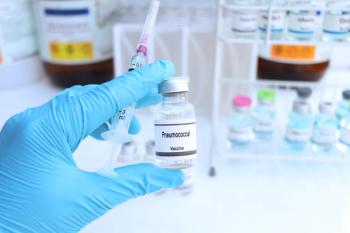
Pharmacists See Major Changes in Managing NHL Patients
The role pharmacists have in helping cancer patients.
The development of oral therapies for a host of oncology diagnoses in the last five years has not altered the institutional oncology pharmacist, but rather changed the pharmacist’s practice to be inclusive of both oral and infusion therapies, according to Michael P. Kane, RPh, director, Oncology Pharmacy Services, Rutgers Cancer Institute, New Brunswick, NJ. He says the development of oral therapies for patients to self-administer has been a logistical and safety challenge, but every challenge is an opportunity.
“Our knowledge in combining small molecule oral oncolytic agents with infusion monoclonal antibodies (MABs) and/or chemotherapy has launched the concept of an integrated, closed-loop specialty pharmacy practice that works in tandem with both the physicians and APNs (advanced practice nurses) in the clinics as well as the pharmacists and nurses in the infusion center,” says Kane.
Designed around the patient’s needs, the concept of integrated, closed-loop specialty pharmacy services allows pharmacists to be embedded within the clinics as well as in the infusion areas. Kane says this type of collaboration improves the patient experience and reduces risk of complications because it improves cross-communication between clinics, outpatient and inpatient infusion, and specialty pharmacy.
“Non-Hodgkin’s lymphoma (NHL) may well be an example to show the progression of target therapies and immune therapy MABs, in addition to classic infusion chemotherapy, to demonstrate the need for such integrated, closed-loop specialty pharmacy practices,” Kane tells Drug Topics.
There are more than 60 distinct subtypes of NHL, and a wide array of therapies has been developed and combined to improve patient outcomes. However, many therapy combinations also include an increased risk of toxicities, pseudo-progressions, and risk of tumor flares.
Working with outpatient APNs, infusion pharmacists and infusion nurses were able to support the outpatient initiation of venetoclax. Kane says this can improve the patient’s quality of life (QOL) by preventing the need for inpatient services. “Establishing the guidelines for toxicity risk specifically tumor lysis syndrome (TLS) and tolerance for rescue response, this team approach is able to navigate the patient’s escalation of their venetoclax dose and manage the risk of TLS with adequate hydration, timing of laboratory assessments and preventive allopurinol and rescue rasburicase,” says Kane.
He says working with patients at key intervals and providing them with blood pressure monitoring equipment, supportive loperamide, and overall adherence education can help patients remain on therapy to the important 6-month mark to ensure maximum potential benefit and response. Once therapy is completed, community pharmacists often are relied upon. M. Scott Thompson, DPh, clinical oncology pharmacy manager, Vanderbilt University Medical Center, Nashville, TN, says when the patient is no longer receiving therapy, they will also lose consistent direct access to their oncology pharmacist’s care or at least have a very limited interaction.
Thompson says a community pharmacist can help to continue the oversight of care. For example, the pharmacist can ask about appetite, nutritional wellbeing, and energy levels. “This care could be made even more personalized, if there are opportunities for the community pharmacist to have interactions with the specialty pharmacy during the patient’s care, as well as the patient’s care team during the time of treatment,” Thompson tells Drug Topics.
Newer combination therapies have greatly changed patient care and where that care is given. Moving from solely infusional or oral therapy to a mixture of both has changed outcomes and where the patient can be treated. Patients are no longer tethered to a hospital bed or a clinic infusion chair. “Many infusion treatments that were once treated as an inpatient or-more recently-clinic infused therapy, are now being administered via home infusion, allowing the patient to retain a more normal/balanced home-life. The vast improvement of supportive care has propelled better outcomes,” says Thompson.
Newsletter
Pharmacy practice is always changing. Stay ahead of the curve with the Drug Topics newsletter and get the latest drug information, industry trends, and patient care tips.






































































































































